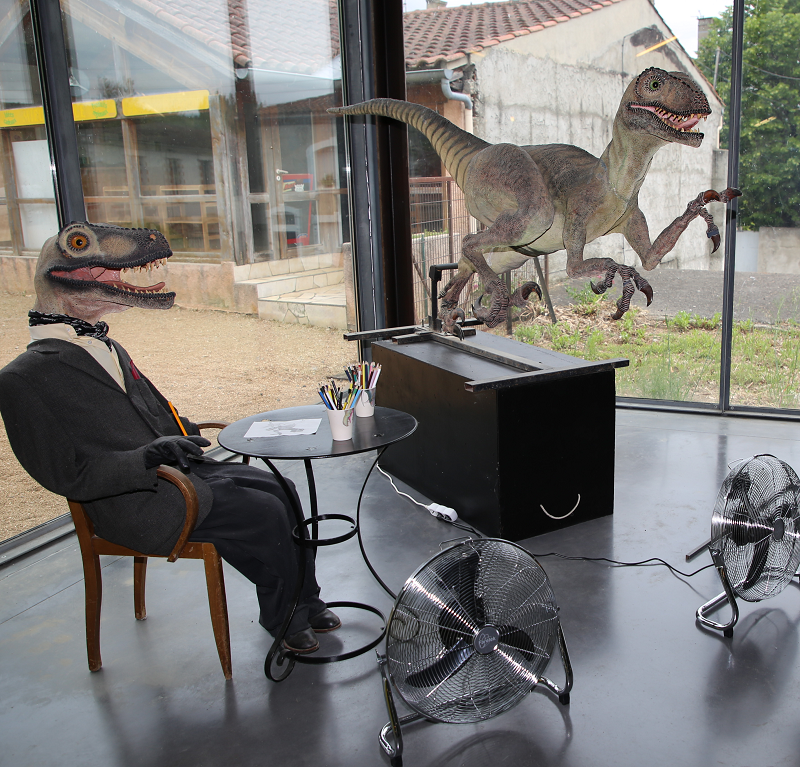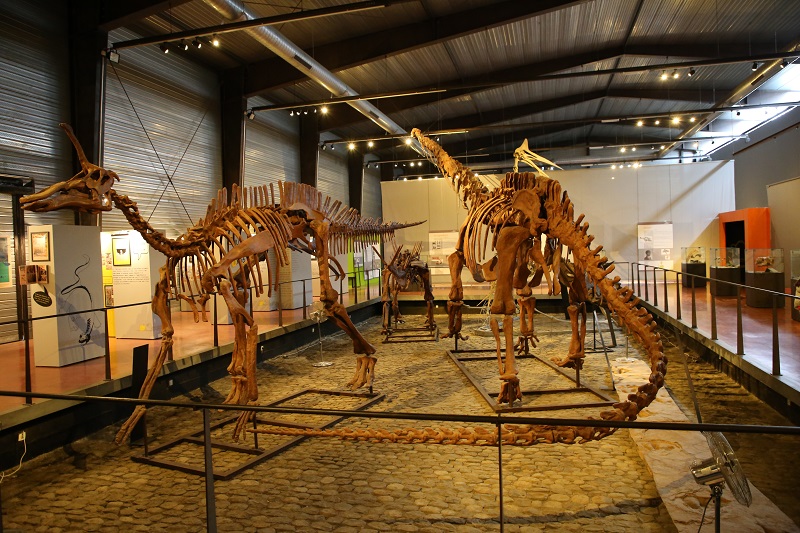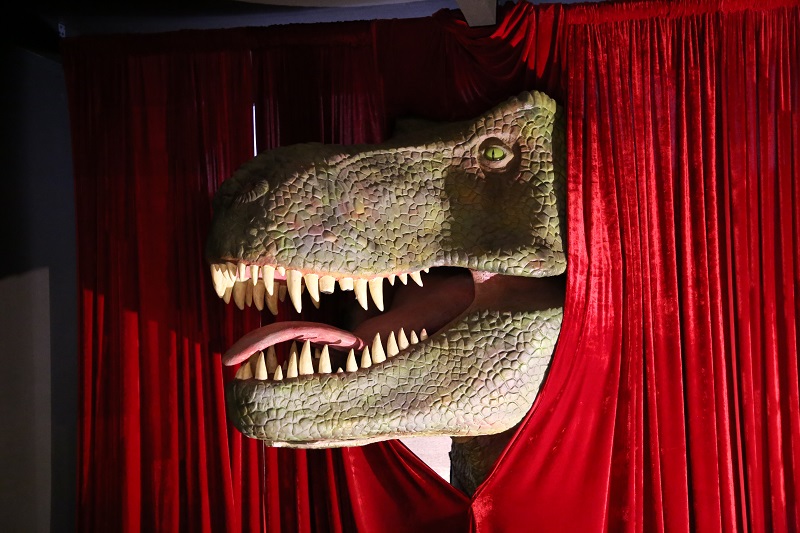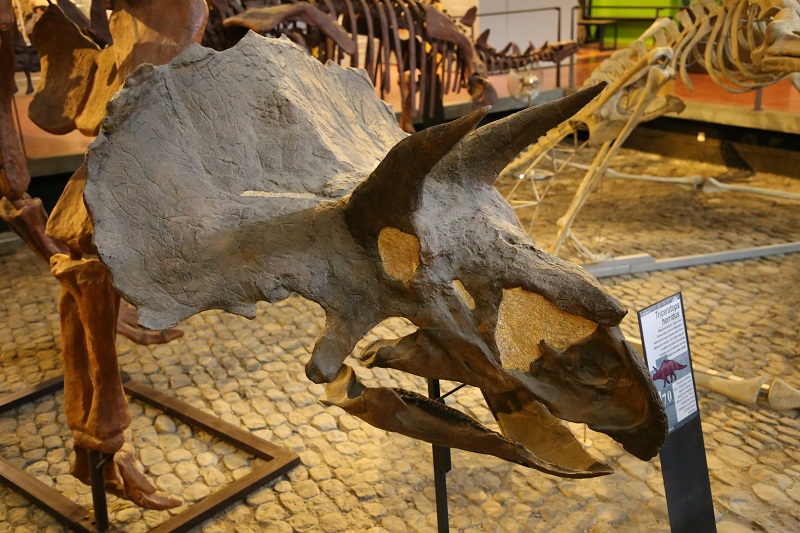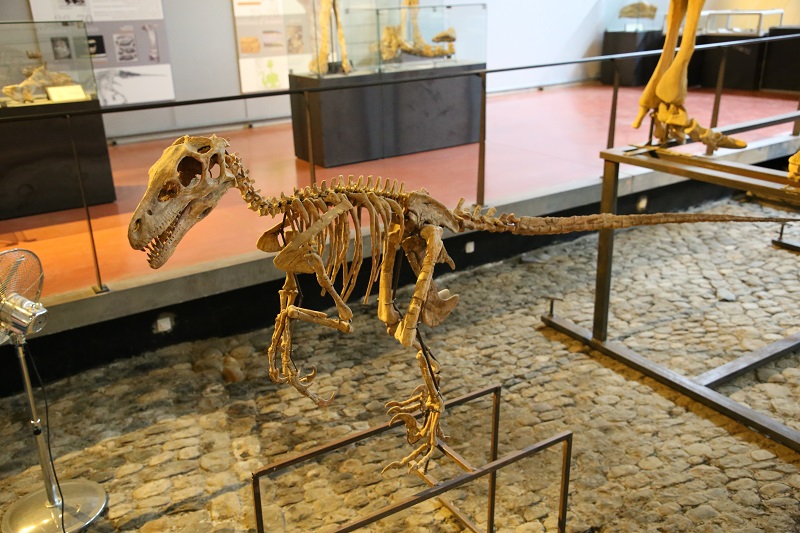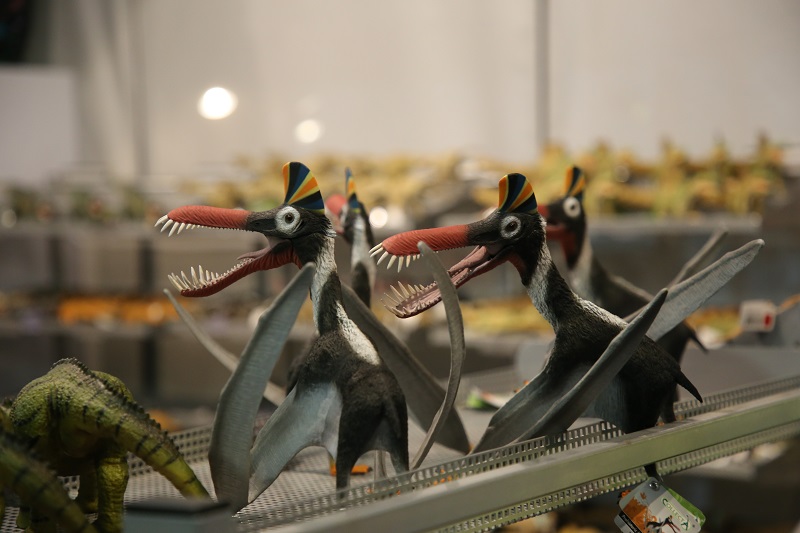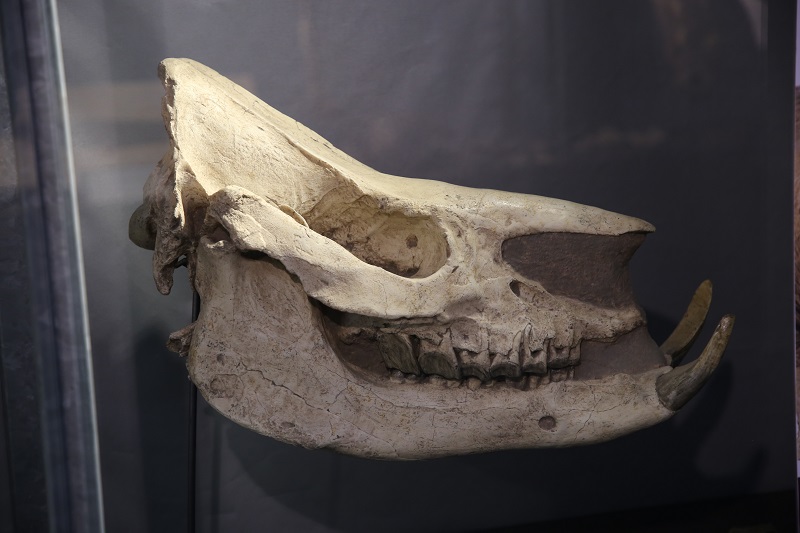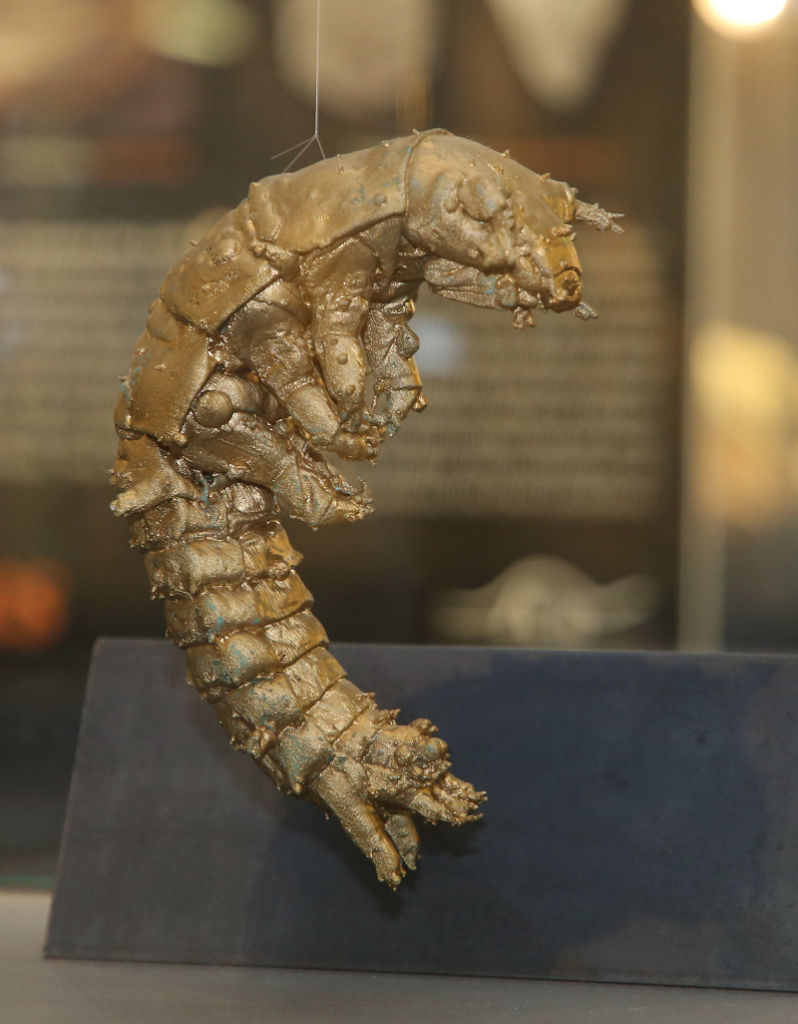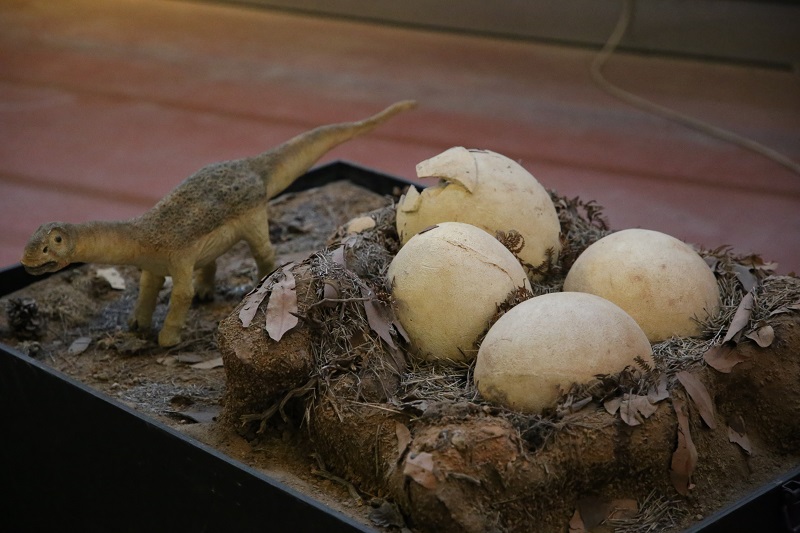Dinosauria is a paleontological museum specializing in the field of dinosaurs, located in Espéraza, in Aude department (Occitania region, France, Pyrenees).
It opened its doors in 19921 and is, as it was already when it opened, under the management of the homonymous non-profit association Dinosauria. The museum puts on display to the public up to 35 different species of dinosaurs, either in the form of skeletons or in the form of life-size reconstructed models, as well as the projection of films. It has skeletons, paleontology workshop and many other elements. It presents a permanent exhibition dedicated to Tyrannosaurus Rex.
The Dinosaur Museum offers an opportunity to travel in time back to the origins of life on Earth nearly 3.5 billion years ago. The museum is interesting for all age categories.
The museum is located in one of the French regions where they discovered the largest number of dinosaur fossils.
The museum opened in June 1992. Its area was 300 m2.
The museum’s area has increased to 2500 m2 since 2007. Here you can find the results of 25 years of research. They offer answers to questions such as: Did all dinosaurs have feathers? Did they have warm blood or cold? How and why did they become extinct?
The museum has established the Dinosauria association which is engaged in scientific research. This is a non-profit organization; almost all of the association’s income comes from membership fees and revenues from the museum’s tickets.
The main activities of the association:
• training on paleontological excavations
• university students’ training
• participation in international congresses
• organization of congresses
• publication of the museum’s specialized magazine Oryctos, and maintaining a popular science blog in the media: Dinoblog.
“Evolution Gallery”: From the First Traces of Life to the Appearance of Humans
A visit to the museum begins with the evolution gallery; a 45-meter long tunnel that allows you to travel in time, starting from the origins of life on Earth, and become acquainted with the world of biodiversity from different times. They renew the gallery constantly. In particular, the mammoth bone, discovered a few kilometers from the museum, joined this exhibition recently.
“Dinosaur of the World Hall”: Tour of the Dinosaurs’ World
This hall offers a walk through the exhibits of dinosaurs and other reptiles, some of which were the exhibits first presented in Europe phytosaurs (lat. Tsintaosaurus), tuojiangosaurus (lat. Tuojiangosaurus), mamenchisaurus (Mamenchisaurus), as well as the skull of the triceratops (Triceratops), and the giant reptile flying quetzalcoatlus with a 12-meter wingspan (the largest known flying reptile).
Aude Dinosaurs’ Hall: When Dinosaurs Ruled the Region
The Dinosaur Museum is in the heart of the Upper Aude Valley (Haute-Vallée de l’Aude), a region that is one of the most famous dinosaur habitats in France. Paleontologists have found thousands of bones here that make up a unique collection in the world. Studies of these fossils revealed and reconstructed the skeleton of the large herbivorous dinosaur Ampelosaurus atacis, which is on display in one of the rooms. Other dinosaur species represented here include: Tarascosaurus, Variraptor and Struthiosaurus, as well as some lizards, skulls, and crocodiles. Dinosaur eggs found in the Upper Valley of Aude are displayed in the center of the room.
You can find answers in the hall to questions about the history of dinosaurs and their biology: reproduction methods, nutrition, diseases, movement, etc.
Diorama: Life-size reconstruction
The diorama completes the first part of the permanent exhibition: dinosaurs discovered in the south of France are recreated from flesh and bones.
The artist and sculptor Claude Moréno (1959 – 2010) made these dinosaurs which are more real than life itself.
Museum Greenhouse: How Did the Landscape Look 70 Million Years Ago?
The Orangery proposes the restoration of an ecosystem close to that which supposedly existed in the south of France 70 million years ago, with plants such as magnolias and tree-like ferns, horsetails and many more.
Lab: Better Understanding of the Paleontologists Work
You can find a fossils study laboratory next to the greenhouse. The museum has organized excavations since 1988 and has collected several thousand bones as a result. The lab cleans bones that have been dug up and prepares them to add to the museum’s collection.
Unfortunately, the lab is not open to visitors. One can only visit during specially organized seminars (see Museum Events below).
Tyrannosaurus and the Lost Worlds: Why is a T. Rex a Star?
Michel and Cavin Christiane presented an animated tyrannosaurus to the dinosaur museum in 2010. The museum’s team decided to allocate a separate place for this exhibit. They opened the “Tyrannosaurus Rex and the Lost Worlds” space in July 2011 which houses a permanent exhibition of 300 m2, fully dedicated to the most famous dinosaurs.
A tyrannosaurus is not only an object of scientific research but it is also a movie star, a literary hero and often used for advertising.
Impressive Tête-à-Tête!
You will have a personal meeting with a 9-metre long Tyrannosaurus Rex in conclusion …
Museum Events: Children’s Birthdays at the Dinosaur Museum
The museum offers educational games for children as well as workshops on making dinosaurs and their tracks, paleontological “excavations”, “hunting” for dinosaurs, alongside visits to the museum’s paleontological laboratory, the tasting of special treats, and small gifts in addition to immersing visitors into the dinosaurs’ environment in the museum itself.
The excursion duration is 3 hours (from 14:00 to 17:00). Children groups are from 5 to 15 persons and the minimum age is 5. The price is 12 € per child.
Workshops for Children from 3 to 5 years old
1. Dino-Puppets.
This art and educational workshop invites the youngest visitors to the museum to create a puppet dinosaur or tyrannosaurus. This seminar allows children to be acquainted with two types of the most famous dinosaurs and answers all their questions: what color they were, what kind of teeth they had, what they hunted, etc. Children will be able to assemble a dino-puppet from parts and dress it in a costume made of wool or fabric, decorated with sequins or feathers.
The workshop lasts for 45 minutes. The workshop is available all year round except for January.
2. “Dinosaur Times” Art Workshop
This art and educational workshop helps children to create a picture of dinosaurs. Choosing “their” dinosaurs and other reptiles, children will learn what kind of structure the dinosaurs had, how they could fly, and how to recognize the carnivorous dinosaurs. This workshop helps to foster children’s imagination. The event lasts for 45 minutes. It is available all year round except for January.
Workshops for Children from 5 to 12 years old
1. Dinosaur “Footprint”
This workshop introduces palaeoichnology (the science of studying fossil tracks) to children and teaches them how to recognize animal tracks, identify dinosaur tracks, and learn imprinting methods, etc. Children independently make a trace of a small carnivorous dinosaur from self-hardening clay.
The workshop lasts for 45 minutes. The workshop is available all year round except for January.
2. Studying Dinosaur Anatomy with Pasta
When a paleontologist discovers bones, he asks the first question: to which part of the skeleton does this bone belong? Is it the bones of the paws or part of the skull? The workshop gives answers that teach participants to recognize the dinosaur’s body parts by using a variety of colored pasta. Children will learn to separate hollow bones and flat bones and understand the difference between the cervical and caudal vertebrae.
The workshop lasts for 45 minutes. The workshop is available all year round except for January.
Workshops for Children from 7 to 12 years old
1. Paleontological Excavation
The workshop familiarizes children with paleontology. Children spend time around a special excavation area and learn about the method of extracting dinosaur bones. Then they match all the discovered bones to the model of the 5-meter skeleton of a dinosaur that lived in southern France 72 million years ago.
The workshop lasts 45 minutes. The workshop is available all year round except for January.
Workshops for Children from 10 years old
1. Dinosaur Teeth
This workshop introduces the paleontological laboratories arranges, and also teaches participants how to cast dinosaur teeth.
The workshop lasts 45 minutes. The workshop is available all year round except for January.
Prices:
• Adults: 9 €
• Children (5-12 years old), students, disabled adults: € 6,50
• Family ticket: EUR 27 for 2 adults and 2 children.
• Children under 5: free
Workshops for children (from 5 years old)
• Paleontological excavations: 3 €
• Dinosaur footprint workshops: 6 €
• Megalosaurus dental workshops: 6 €
How to get to?
From Paris: 8 hr 26 min (795 km) via A20
From Toulouse: 1 hr 44 min (120 km) via A61
From Andorra: 2 hr 25 min (118 km) via D613
From Barcelona: 3 hr 30 min (269 km) via AP-7
From Madrid: 8 hr 39 min (767 km) via A-2
From Monaco: 5 hr 34 min (540 km) via A8 and A9
From Moscow: 36 hr (3,466 km) via E30/M1
From Belgrade: 18 hr 41 min (1,844 km) via E70
From Istanbul: 29 hr (2,793 km) via E70
From Bern: 8 hr (799 km) via A9
See here Pyrenees travel guide
See here France travel guide
See here Spain travel guide




